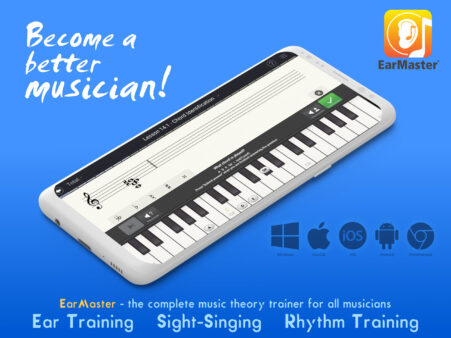[It’s back! After taking a break over the summer, I have an incredible backlog of questions in my inbox so I’m excited to resume the Monday Mailbag feature here on Music Matters Blog. I always love hearing from other teachers with both thought-provoking questions and helpful answers. Many teachers send questions with the hope of getting a variety of feedback from other teachers, so please feel free to leave comments below!]
Last year, a mom confided to me that her children really aren’t practicing well…..normally they just sit down at the piano, play straight through their piece, and check off their practice square with no further thought. I realized that while I can teach the kids everything they could ever want to know about the piano at their lesson, if they don’t practice well at home, they can never succeed in becoming an accomplished pianist. This being said, I would love to hear from you how you implement, teach, and enforce good practice skills for your students to take home with them.
I suppose “hope and pray that they figure it out” isn’t the answer you’re looking for. 🙂 There are dozens of very helpful resources out there with practice tips and suggestions. I’m willing to bet that despite the creators best intentions these are primarily purchased and used by teachers rather than students. But I don’t think that’s entirely bad. The reality I’ve discovered is that regardless of what you say about how or what the student should practice at home, it is the model you set in the lesson that is most apt to be imitated.
The longer I teach, the more I realize how essential it is to model and incorporate good practice habits as early as possible in the lessons. Here are a few practical tips that can be applied to teaching students of all ages and levels:
1. Hone In On Trouble Spots First – How often do you tell students not to automatically start practicing a piece at the beginning at home, but then have them play each piece they practiced that week for you at the lesson by starting at the beginning and playing through? Instead, try asking the student, “Which part of this piece was the most difficult for you?” or “Is there any part of this piece that you’re having a hard time with…any measure that as you get closer you know you might have to slow down in order to get through it?”
2. Circumvent Difficulties – When assigning a new piece of repertoire, have the student identify what aspects of the piece they think will be the most difficult – either concept-wise (e.g. a particular rhythm pattern) or measure-wise (e.g. a big transition point). Then resist the urge to just talk about how to practice! Instead actually work through the process with them to see how quickly and efficiently they can master that aspect of the piece using appropriate practice strategies (that you will know from all those practice resources you’ve purchased over the years…).
3. Be Patient – Give the student time to implement the practice strategy, even if it means not getting to some other part of the lesson. Don’t give up on them! If they are attempting to play a measure seven times in a row correctly, insist that they get all seven there at the lesson. Or if you’re doing the “add-a-note-strategy” for a line where they keep adding one note until they can play an entire phrase fluidly with correct notes, rhythms, and fingering, work with them to the end. This instills confidence in the student and reinforces the value of effective practice. If they get frustrated and want to give up, I remind them that this is more painful for me than it is for them. It’s not for my own listening enjoyment that I make them stick with one hard spot until they can play it seven times in a row. 🙂
4. Focus on the Long-Term – Approach practice strategies conceptually so that the student is able to transfer what they learn to other similar situations. For example, if a student is struggling to play the rhythm correctly, just playing it or tapping it for them and having them imitate the sound does nothing for their long-term music learning abilities. They may know how to play that particular piece correctly, but will probably struggle with the same problem in another piece. One approach I use is to tell a student, “If I was to let you know that there is something incorrect about the rhythm in measure 12, what are some strategies you can use to identify the error and fix it?” This is direct enough so that they understand where and what the problem is, but open enough so that they still have to use some critical thinking skills to find a solution.
Remember, if you have a question you’d like to contribute to next week’s Monday Mailbag, leave it in the comments below or send me an e-mail sometime this week with Monday Mailbag in the subject line!













Leave a Reply